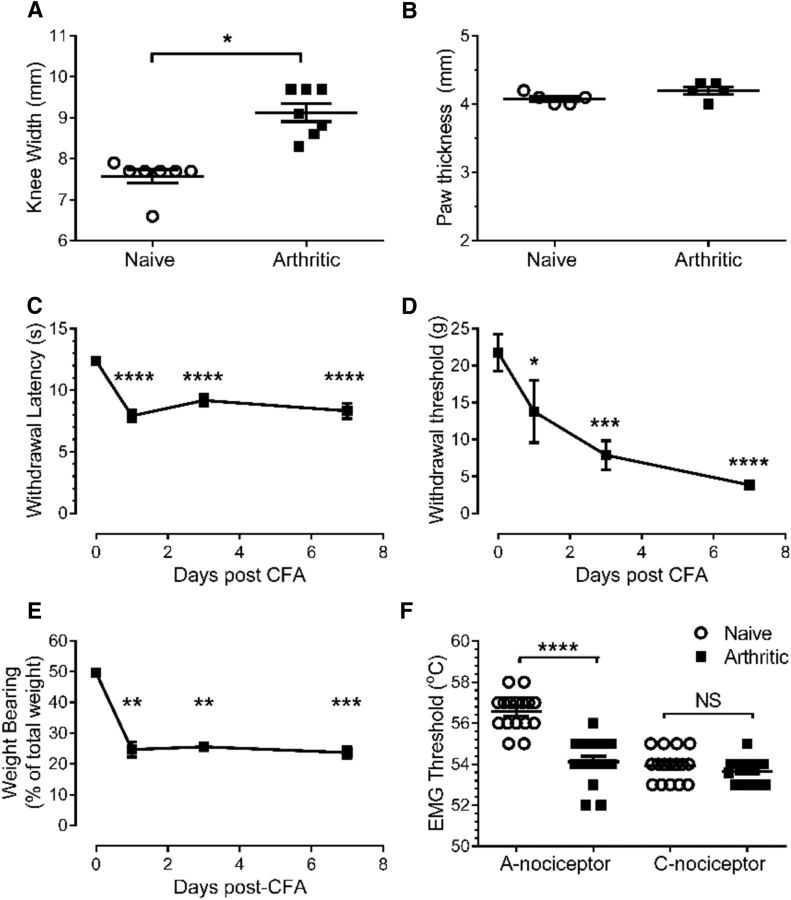Figure 3.
CFA-induced knee joint inflammation leads to behavioral secondary hyperalgesia and allodynia of the hindpaw. A, B, A single intra-articular knee joint injection of CFA (100 μl) leads to an increase in the width of the knee joint (Wilcoxon's signed-rank test, W = −28.0, p = 0.016, Shapiro–Wilk normality test for naive data, W = 0.58, p = 0.002; n = 7; A), but not in the hindpaw (unpaired t test, p = 0.11, t = 1.8, df = 8, n = 5; B). C, D, Knee joint inflammation produced a reduction in the withdrawal threshold to both thermal (C) and mechanical (D) stimuli delivered to the plantar surface of the hindpaw of the inflamed limb [repeated-measures ANOVA, p < 0.0001 (for both), F(3,18) = 39.69 (for C) and F(3,18) = 14.80 (for D) with Bonferroni's post hoc tests, ****p < 0.0001, ***p < 0.001, *p < 0.05, n = 7/group). E, Knee joint inflammation leads to a persistent reduction in the weight borne on the inflamed limb (Friedman test, Q = 21.99, p < 0.0001 followed by Dunn's multiple-comparison test, **p < 0.01, ***p < 0.001, Shapiro–Wilk normality test for day 0 data, W = 0.78, p = 0.005, n = 11). F, Withdrawal threshold to preferential A-nociceptor, but not C-nociceptor, activation was significantly lower in secondary sites in arthritic animals versus naive animals (one-way ANOVA, p < 0.0001, F(3,60) = 39.26 with Bonferroni's post hoc test ****p < 0.0001, n = 16).

